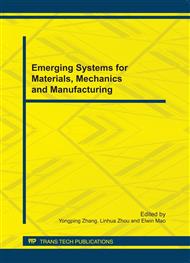p.651
p.656
p.661
p.666
p.671
p.676
p.681
p.685
p.690
PSO-Based Uncorrelated Hybrid Discriminant Analysis Algorithm
Abstract:
Hybrid discriminant analysis (HDA) can overcome small sample problems and outperform PCA and LDA by unifying principal component analysis (PCA) and linear discriminant analysis (LDA) in a single framework. However, the existing HDA algorithm can’t extract more discriminant information from dataset, and model parameters are difficult to select. To deal with the above problems, a particle swarm optimal (PSO)-based uncorrelated hybrid discriminant analysis algorithm is presented. The conjugate orthogonal condition is added to optimization problem of HDA, PSO is explored to select optimal HDA parameters and the optimal solution can be achieved by solving eigenvalue problem. Simulation demonstrates merits of the proposed algorithm.
Info:
Periodical:
Pages:
671-675
Citation:
Online since:
October 2011
Authors:
Price:
Сopyright:
© 2012 Trans Tech Publications Ltd. All Rights Reserved
Share:
Citation:


